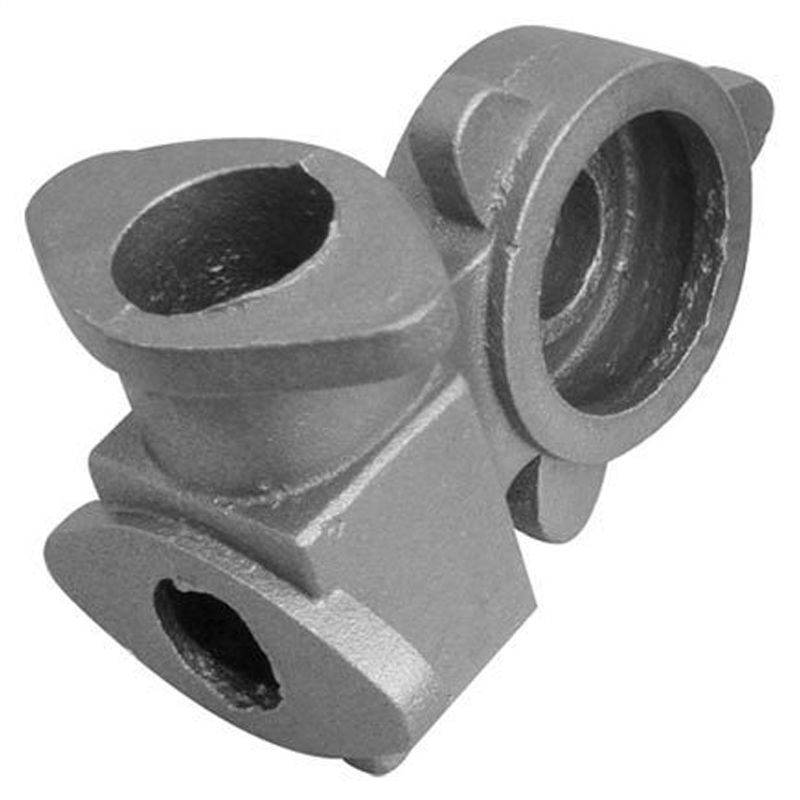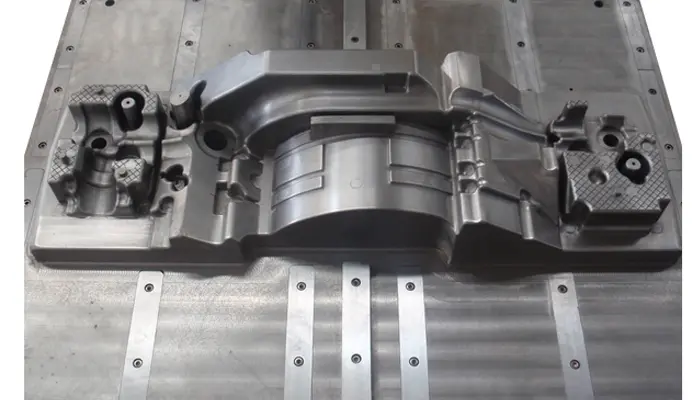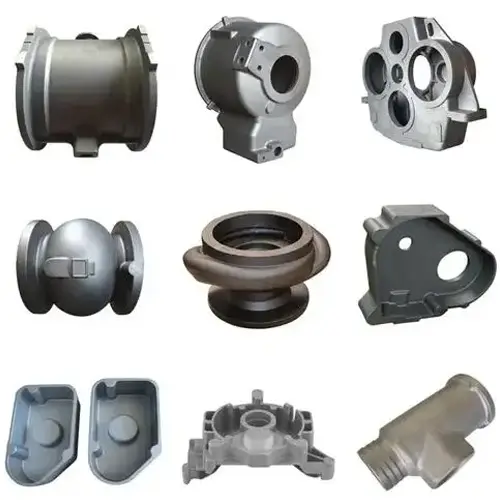The spheroidization level of ductile iron castings is required to reach level 4 or above (i.e. spheroidization rate of 70%). The spheroidization rate achieved by general foundries is about 85%. Wind power casting production and industries with high casting quality requirements require the spheroidization level to reach level 2, i.e. spheroidization rate of more than 90%. By analyzing and improving the spheroidization and inoculation treatment process, spheroidizer and inoculant originally used in QT400-15, the spheroidization rate of ductile iron has reached more than 90%.
In order to improve the spheroidization rate, the original spheroidization and inoculation treatment process was improved. The main measures are: increasing the amount of spheroidizer and inoculant added, purifying molten iron, desulfurization treatment, etc. The spheroidization rate was tested using a 25 mm single cast wedge test block. The specific plan is as follows:
(1) The reason for the low spheroidization rate of the original process was analyzed. It was believed that the amount of spheroidizer was too small, so the amount of spheroidizer added was increased from 1.3%~1.4% to 1.7%, but the spheroidization rate did not meet the requirements.
(2) Another guess is that the low spheroidization rate may be caused by poor inoculation or inoculation decline. Therefore, the inoculation dosage was increased from 0.7%~0.9% to 1.1%, and the spheroidization rate did not meet the requirements.
(3) Further analysis showed that the high inclusions in the molten iron and the high level of spheroidization interference elements may be the reasons for the low spheroidization rate. Therefore, the molten iron was purified at high temperature. The high-temperature purification temperature was generally controlled at 1500±10℃, but its spheroidization rate still did not exceed 90%.
(4) The high ω (S) content seriously consumes the spheroidizing agent and accelerates the decline of spheroidization. Therefore, desulfurization treatment was added to reduce the ω (S) content of the original iron liquid from the original 0.035% to below 0.020%, but the spheroidization rate only reached 86%.
The test results of the above four schemes did not meet the requirements.
The final improvement scheme adopted
Improvement measures
When the ω (S) content of the raw iron liquid exceeds 0.02%, industrial soda ash is used for pre-furnace desulfurization. Because the desulfurization reaction is an endothermic reaction, the desulfurization temperature is required to be controlled at about 1500 ° C. The amount of soda ash added is controlled at 1.5% ~ 2.5 according to the ω (S) content during pre-furnace melting. At the same time, the spheroidizing treatment bag adopts the ordinary dam-type treatment bag. First, add 1.7% of Foseco NODALLOY7RE spheroidizing agent to one side of the dam at the bottom of the bag, flatten and compact it, and then cover it with 0.2% powdered silicon carbide and 0.3% small pieces of 75SiFe in succession. After tamping, cover it with a pressure iron, and add 0.3% of Foseco 390 inoculant to the other side of the molten iron bag. When tapping, first flush in 55%~60% of the total molten iron. After the spheroidizing reaction is completed, add 1.2% 75SiFe-C After the inoculant, the remaining molten iron is poured in, and the slag is removed and poured.
Test results
4. Result analysis
4.1 Effect of main elements on spheroidization rate
C, Si: C can promote graphitization and reduce the tendency of white cast iron, but high ω (C) content will make CE too high and easily cause graphite floating, which is generally controlled at 3.7%~3.9%. Si can enhance the graphitization ability and eliminate cementite. When Si is added as an inoculant, the supercooling ability of molten iron can be greatly reduced. In order to improve the inoculation effect, the ω (Si) content of the original molten iron is increased from the original 1.3% ~1.5% to 0.8%~1.2%, ω (final Si) is controlled at 2.60%~3.00%.
Mn: During the crystallization process, Mn increases the supercooling tendency of cast iron and promotes the formation of carbides (FeMn) 3C. During the eutectoid transformation process, Mn reduces the eutectoid transformation temperature, stabilizes and refines pearlite. Mn has little effect on the spheroidization rate. Due to the influence of raw materials, ω (Mn) is generally controlled to be <0.30%.
P: When ω (P) <0.05%, it is dissolved in Fe, and it is difficult to form phosphorus eutectic, which has little effect on the spheroidization rate of ductile iron.
S: S is an anti-spheroidizing element. S consumes Mg and RE in the spheroidizing agent during the spheroidization reaction, hinders graphitization, and reduces the spheroidization rate. Sulfide inclusions will also return to sulfur before the molten iron solidifies, consuming spheroidizing elements again, accelerating the decline of spheroidization, and further affecting the spheroidization rate. In order to achieve a high spheroidization rate, the ω (S) content of the original molten iron should be reduced to below 0.02%.
4.2 Desulfurization treatment
After the charge is melted, take samples to analyze the chemical composition. When the ω (S) content is higher than 0.02%, desulfurization treatment should be carried out.
4.3 Pre-deoxidation, spheroidization and inoculation
Foseco 390 pre-treatment agent plays a role of pre-deoxidation treatment in the package, while increasing the graphite nucleation core and the number of graphite nodules per unit area. It can also improve the absorption rate of Mg, greatly improve the anti-degradation ability and the spheroidization rate. Foseco inoculant contains ω (Si) = 60% ~ 70%, ω (Ca) = 0.4% ~ 2.0%, ω (Ba) = 7% ~ 11%, of which Ba can prolong the effective inoculation time.
The Foseco spheroidizer brand is NODALLOY7RE, with ω (Si) = 40% ~ 50%, ω (Mg) = 7.0% ~ 8.0%, ω (RE) = 0.3% ~ 1.0%, ω (Ca) = 1.5% ~ 2.5%, ω (Al) < 1.0%. Since the molten iron has been desulfurized and pre-deoxidized, the elements that consume the spheroidizer in the molten iron are greatly reduced. Therefore, a spheroidizer with a low ω (RE) content is selected to reduce the deterioration of the morphology of spheroidal graphite by RE; the elements that play a spheroidizing role are mainly Mg; Ca and Al can play a role in strengthening the inoculation.
5. Conclusion
When producing ferritic ductile iron and requiring a spheroidization rate of more than 90%, the following measures can be adopted:
(1) Select high-quality furnace charge to reduce the anti-spheroidizing elements in the charge.
(2) Select a spheroidizer with a low ω (RE) content to reduce the deterioration of the morphology of spheroidal graphite by RE.
(3) The ω (S) content of the original iron liquid should be less than 0.020%, which can reduce the consumption of spheroidizers, especially the spheroidizing elements consumed by the secondary sulfurization of sulfide slag.
(4) Pre-deoxidation treatment of the iron liquid can increase the number of graphite balls per unit area, improve the spheroidization rate, greatly improve the anti-degradation ability, and extend the effective inoculation time.
(5) Reduce the ω (Si) content in the original iron liquid, increase the amount of spheroidizers, inoculants and various pretreatment agents added, and strengthen the inoculation treatment.





